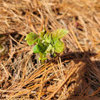Can you ID this bean disease? Please?
NilaJones
11 years ago
Related Stories

SUMMER GARDENINGHouzz Call: Please Show Us Your Summer Garden!
Share pictures of your home and yard this summer — we’d love to feature them in an upcoming story
Full Story
DECORATING GUIDESThe '70s Are Back. Can Ya Dig It?
No need to cringe. These 21 groovy blasts from the past are updated to look fabulous today
Full Story
HOME TECHWhat Chipotle and Radiohead Can Teach Us About Sound Quality at Home
Contemporary designs filled with glass and concrete can be hostile environments for great sound quality. Here's how to fix that
Full Story
KITCHEN DESIGNTrending Now: 25 Kitchen Photos Houzzers Can’t Get Enough Of
Use the kitchens that have been added to the most ideabooks in the last few months to inspire your dream project
Full Story
MOST POPULAR9 Real Ways You Can Help After a House Fire
Suggestions from someone who lost her home to fire — and experienced the staggering generosity of community
Full Story
KITCHEN DESIGN6 Clever Kitchen Storage Ideas Anyone Can Use
No pantry, small kitchen, cabinet shortage ... whatever your storage or organizing dilemma, one of these ideas can help
Full Story
GARDENING GUIDES10 Easy Edibles for First-Time Gardeners
Focus on these beginner-friendly vegetables, herbs, beans and salad greens to start a home farm with little fuss
Full Story
MOST POPULARA Fine Mess: How to Have a Clean-Enough Home Over Summer Break
Don't have an 'I'd rather be cleaning' bumper sticker? To keep your home bearably tidy when the kids are around more, try these strategies
Full Story
DECORATING GUIDESFrom Queasy Colors to Killer Tables: Your Worst Decorating Mistakes
Houzzers spill the beans about buying blunders, painting problems and DIY disasters
Full Story
LIVING ROOMS8 Living Room Layouts for All Tastes
Go formal or as playful as you please. One of these furniture layouts for the living room is sure to suit your style
Full Story



pnbrown
jean001a
Related Discussions
Strawberry leaves/disease: can you ID?
Q
pics of my citrus. pests?disease? please id probs or add pics too
Q
Disease/Fungus/Pest ID?? Please
Q
Can anyone id this beans plant please?
Q
jimster
NilaJonesOriginal Author
sunnibel7 Md 7
NilaJonesOriginal Author
NilaJonesOriginal Author
rhizo_1 (North AL) zone 7
NilaJonesOriginal Author
little_minnie
NilaJonesOriginal Author
Beeone
rhizo_1 (North AL) zone 7
NilaJonesOriginal Author
little_minnie
NilaJonesOriginal Author
wisbill
NilaJonesOriginal Author
little_minnie
NilaJonesOriginal Author
hokiehorticulture
rhizo_1 (North AL) zone 7
sunnibel7 Md 7
number2
number2
NilaJonesOriginal Author
hokiehorticulture
NilaJonesOriginal Author
rhizo_1 (North AL) zone 7